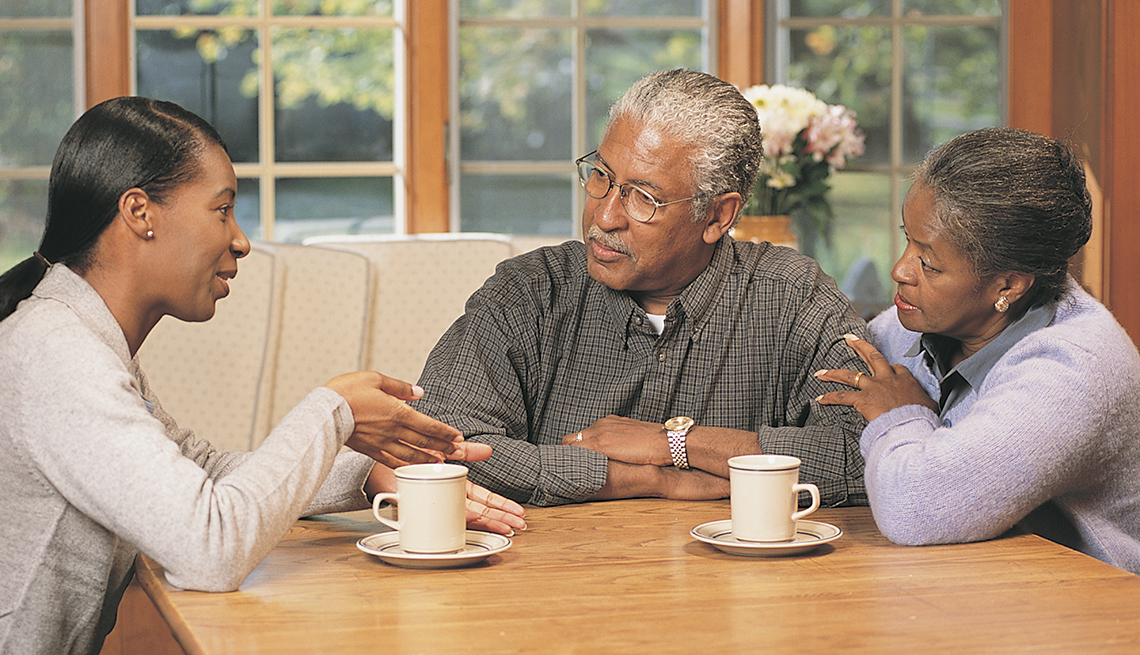
- Select a language for the TTS:
- UK English Female
- UK English Male
- US English Female
- US English Male
- Australian Female
- Australian Male
- Language selected: (auto detect) - EN
Play all audios:
No one wants to think about a natural disaster striking the area where an older loved one lives, but creating an emergency plan so you’re ready before a tragedy happens is wise. Fires,
floods, hurricanes, tornadoes and other disasters can happen any time of year. Given the increasing frequency and severity of intense weather and other so-called natural disasters, it may
not be a case of if, but of when. “The three steps to preparedness … include making a plan, making a kit and being informed,” says Lauren Kraemer, an associate professor of practice in the
College of Public Health and Human Sciences at Oregon State University Extension Service who gives seminars on disaster preparation and aging. “Those are kind of three main pointers if I
were to distill lots and lots of information down to three things that hopefully you’ll remember.” YOUR LOVED ONE PROBABLY HAS NO PLAN YET Don’t assume someone else has established a
disaster plan. A 2023 AARP survey of adults 50 and older found that while 60 percent said they felt prepared for a natural disaster, few had taken steps to get ready. About 1 in 3 do not
have extra prescription medicine, almost half don’t have emergency phone chargers, only 12 percent follow local authorities on social media and only a handful have made copies of important
documents for a bag they can grab if they must leave home nor placed them securely in the cloud for access from anywhere they can find Wi-Fi. A PAPER CHECKLIST CAN HELP AARP’S CREATE THE
GOOD INITIATIVE, which connects potential volunteers with opportunities, has printable guides in English and Spanish to walk you through all the steps necessary to prepare for an emergency.
While most public health departments have conducted disaster preparedness programs, these aren’t necessarily designed to address the needs and challenges of older adults, Kraemer says. Yet,
older adults are especially vulnerable during and after disasters because of chronic health conditions, mobility challenges and slower reaction times. “Take preparatory steps in
[nonemergency] times so that when an emergency does occur, there’s a plan in place for what older adults and family caregivers should do,” says Andrew B. Crocker, a gerontology and health
specialist at the Texas A&M AgriLife Research and Extension Service in Amarillo. Here are key steps to take, depending on where your loved one lives: HAVE A PLAN TO EVACUATE FROM HOME
Urge your loved one to keep the car gassed up — if he or she is still driving — and keep first aid kits and easy-to-hold battery-operated lanterns in easy-to-remember places. You’ll also
want to: MAKE A LIST OF LOCAL CONTACTS. Friends, neighbors, faith leaders and other close acquaintances can check on your loved one or give emergency caregiver assistance. You’ll want to
figure out how they will stay in touch with you during an emergency. Exchange phone numbers and email addresses with these folks. Enter the information in both your own and your loved one’s
phone.




:max_bytes(150000):strip_icc():focal(999x0:1001x2)/charlize-megyn-2000-9058eae0f2b445528211d852de1bb68a.jpg)
